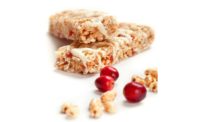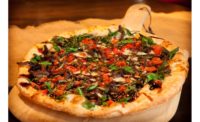Sales of snack bars—like granola, nutritional, breakfast, and other types of bars—have endured a rollercoaster of consumer engagement over the past couple of years. According to data presented in the 2020 SF&WB “State of the Industry” coverage, the snack and granola bars category was up 1.4% to $6.4 billion (IRI, Chicago, 52 weeks ending April 19, 2020). But the following year—likely a consequence of reduced consumer mobility—category sales plummeted, down 8.3 percent to $6.0 billion, with nearly every company in the top 10 for the category experiencing reduced sales (IRI, 52 weeks ending April 18, 2021).
But bars are climbing back. In our coverage of the bars category at the end of 2021, we saw category sales striding forward, up 6.2% to a sales of $6.5 billion. And our forthcoming 2022 State of the Industry coverage (available in June) shows continued bars strength, with sales up 17.0% to $6.9 billion, per IRI.
Innovation continually advances bar R&D. In order to gain some perspective on current market strategies, we reached out to several key companies supplying and working with bakeries in the bar category:
- Cate Batson Baril, Marketing Manager, Global Organics
- Sylvie Brunel, Innovation and Process Director, Clextral
- José Coelho, President, Clextral
- Thom King, CEO, Icon Foods
- Eleanor Miller, Product Strategic Manager, Glanbia Nutritionals
- Julie Prost, Pilot Plant Manager and Process Engineer, Clextral
- Wouter Stomph, North America Head of Cocoa Product Development & Innovation, ofi
- Doug Webster, Director of Research and Development, Tree Top Inc.
- Paul Whitman, Fruit & Vegetable Category Manager, Global Organics
- Yanling Yin, Director of R&D, Corbion
SF&WB: What are the top trends in snack bars today?
 Eleanor Miller
Eleanor Miller
Eleanor Miller: The most-impactful trend is people being back “on-the go,” not just working, but traveling and attending events, which has helped nutrition bars rebound from the declines seen in 2020 and 2021. Consumers are paying more attention to their health, and better-for-you snacks are continuing to grow. Consumers seek protein in their bars and are wary of carbohydrates. Bars with benefits are growing, with brands looking to specialize offerings to consumers, such as immunity, focus, and energy positioning. Nostalgic packaging and flavors are also a trend with people looking for their food to be fun.
Thom King: Plant-based is the top trend. Breaking it down into a super trend would be no added sugar, clean label, plant-based, and high protein. We have seen a steady increase in ingredient sales to bar manufacturers—specifically sweeteners and fibers. Over the past two years, eating habits have changed dramatically from meals to snacking, and snacking has leaned into bars.
 Doug Webster
Doug Webster
Doug Webster: Protein is still huge, and the mighty mushroom is coming on strong. Other top trends include: cold-pressed bars with easily identifiable inclusions (pieces, not powders or syrup), wellness and immunity enhancement, focus on nutrient density, prebiotics like added fiber, a hint of indulgence by layering unique ingredients or (everyone’s favorite) chocolate, polarizing combinations of chewy and crunchy in one bar, and downsizing to bites not bars.
 José Coelho
José Coelho
José Coelho: Another trend is the use of pulses as popular ingredients, as snack-makers work to formulate wholesome bars that satisfy a variety of dietary needs of consumers. These nutritionally dense legumes have a low glycemic index compared to other grains, high fiber and protein content, and important vitamins and minerals. They are low in saturated fat with no cholesterol and gluten-free. Commonly used pulse varieties include chickpeas, beans, peas, lentils, and black-eyed peas. Most bars today also have inclusions. These are either dense or crisp additions made from fruit, vegetables, nuts, or chocolate ingredients that add interesting texture, flavor, color, and often a nutritional component to snack bars.
 Wouter Stomph
Wouter Stomph
Wouter Stomph: Gone are the days when snacking was simply a guilty pleasure. As consumers grow more health-conscious, many are looking for more from their snack bars. From high-protein, high-fiber snacks to those with low and no added sugar, products with health claims have grown significantly in recent years. We’re seeing manufacturers respond by developing new ideas packed with flavor to satisfy the taste buds, whilst also offering additional nutritional benefits—from using alternative milks to incorporating fruits or nuts as a source of protein and fiber. Manufacturers are also experimenting with sugar reduction, using the natural flavor of cocoa to deliver impact and indulgence.
 Cate Batson Baril
Cate Batson Baril
Cate Batson Baril: Some brands have pivoted to more online sales channels; almost all have provided richer marketing stories online no matter where products are sold. Instagram, TikTok, Facebook, their own websites, and retailer websites share so much more information than just nutritional and ingredient panels. Fifteen-second videos showing how products are made or where ingredients are sourced are helping consumers more deeply connect with brands. Certifications (organic and fair trade, and now Regenerative Organic Certification) help brands make the case that their products do more than just taste good. These certifications are easily recognized on the shelf and online by consumers who want their products to reflect their own values.
SF&WB: What are some of the production challenges related to working with better-for-you bar ingredients?
 Sylvie Brunel
Sylvie Brunel
The addition of fruits and vegetables brings a great asset to the product from a nutritional perspective. They are often introduced as dry ingredients directly into the extruder barrel inlet via volumetric or gravimetric feeders. When used in powder form, it is important that the fruit and vegetable ingredients have homogenous granulometry with the other extruded ingredient bases (starch and protein).
Doug Webster: A key factor in shelf life is controlling water activity (aW) and water binding. Water activity controls microbial growth, because microorganisms, such as yeast, mold, and bacteria only use the available water in a food system. Total moisture is either in a free or a bound form, with the free water considered available. Designing a product with aW below 0.60 is an effective control, although it is not equivalent to a kill step. Finding clean-label ingredients to bind water without compromising the flavor can sometimes be challenging. Fruit powders, grind, or pastes can help bind water and hold the complete bar together.
Plant proteins are often gritty and chalky. Pre-blending them with fruit grind or paste helps make them a little bit more palatable by hiding the protein from the tongue’s sensitive taste buds. Delivering on flavor without adding natural flavors isn’t often easy. By using a small amount of characterizing fruit purée like lemon, blueberries, Honey Crisp apples, or peach purée brightens and delivers on flavor.
 Yanling Yin
Yanling Yin
Yanling Yin: Naturally fermented/cultured sugar and extended-shelf-life (ESL) solutions can help with product freshness and softness. Dough conditioners can also provide a great improvement in processing tolerance when working with a challenging formula containing high-protein and low-carb ingredients.
SF&WB: How can bar producers create differentiated products to capture consumer attention?
Doug Webster: Organic, clean label, and better for you are very much front and center in bar development. Most of the new product development we see in the category is either organic, clean label, better for you, or a combination thereof. The three often overlap. Demand for these ingredients is strong, so a developer should secure supply before showing prototypes to a marketing team. In formulations, there can be challenges finding ingredients that fit consumer expectations of clean label and better for you and that meet product developer goals for stability and shelf life. Organic formulations face similar challenges with functional ingredients. Many of the functional ingredients formulators have traditionally relied upon for stability and to extend shelf life don’t qualify as organic.
Thom King: The majority of our formulations have continued down the clean-label sugar-reduction path, with a solid expansion into exciting and creative inclusions and variegates of all kinds, from chips to candy-coated chocolates. With supply chains normalizing for allulose, erythritol, soluble tapioca fiber, and inulin-type fibers, we are seeing more bars utilizing all of these inputs.
Wouter Stomph: Today’s consumers want to understand exactly what’s in the foods they consume. Simple and familiar ingredients are associated with health and quality. As such, they want to see a short, recognizable ingredients list, with clear information on origination and sourcing for peace of mind. As a result, we’ve seen growing interest in cocoa ingredients, which are rich in minerals like magnesium, potassium, and zinc, and provide intense and indulgent flavors without the need for excess sugar, flavorings, or colorants. Manufacturers are mixing cocoa with functional ingredients like ginger or turmeric, both used in herbal medicine for their antioxidant, anti-inflammatory, and anticancer properties. Botanicals like angelica root are becoming popular because of their positive impact on energy and immunity. This trend is particularly apparent in Asia, where we’ve seen consumers opting for chocolate bars made with matcha and miso, due to their mood and energy-boosting benefits.
Ingredients and flavor mashups are also continuing to grab consumer interest in the market. In snack bars, salty, savory ingredients like nuts and spices are being blended with sweet cocoa elements, and manufacturers are innovating by introducing cross-category combinations, such as strawberry shortcake or s’mores flavored protein bars.
Plant-based products are becoming more commonplace in the snack and bar scene, but the real winners will be defined by the quality and innovation they bring to the table in their dairy-free alternatives. While vegan bars have generally consisted of high-cocoa-percentage dark chocolate, experimentation with different milk alternatives is enabling manufacturers to create creamy, yet healthier alternative snacks that are as close to the real thing as possible.
Paul Whitman: Low sugar and low-glycemic sweeteners continue to be key consumer motivators. Organic coconut sugar with its low glycemic index (GI 35), fits well for consumers following keto, Paleo, and Whole30 diets. We continue to see more inclusions, like organic chocolate chips and peanut butter chips, sweetened with coconut sugar. Organic coconut nectar (GI 37) is a great fit for no-bake bars. It is a 1:1 replacement for other liquid sugars, with a distinct, caramelized, brown sugar flavor. We are also seeing increased demand for non-sugar sweeteners like organic agave inulin, which provides prebiotic dietary fiber, and dried fruits like organic dried banana paste that adds both fiber and sweetness.
 Julie Prost
Julie Prost
Julie Prost: This is where the flexibility of the twin-screw extruder comes into play. For snack bars, extrusion offers the opportunity to produce a variety of inclusions or crisps with different shapes, such as balls, rice crisps, or flakes. These are commonly used for snack bars formed from agglomerated ingredients that combine extruded inclusions and/or crisps as the ingredient base.
Eleanor Miller: Consumers’ interest will grow in personalized nutritional bars that deliver the ideal mix of nutrients to match their needs, with tastes that mirror their specific taste. Brands have more data available than ever and are able to better pinpoint their target audience. They can develop bars for functional benefits like energy, satiation, enjoyment, and immunity boost. Protein, healthy fats, and fiber continue to be the backbone for nutritional bars. Sourcing and story of ingredients, sustainability, nutritional value, and upcycled ingredients all will play a bigger role in developers’ formulation choices.





